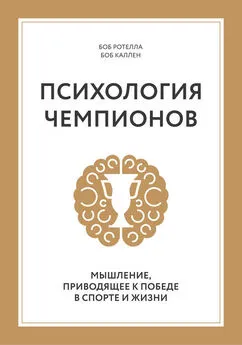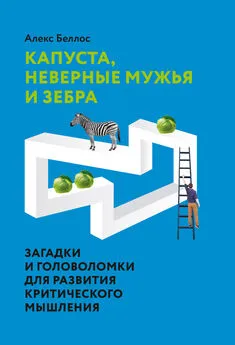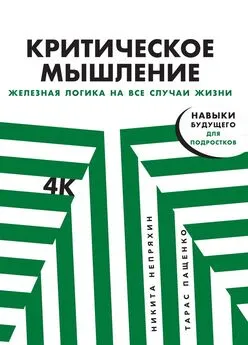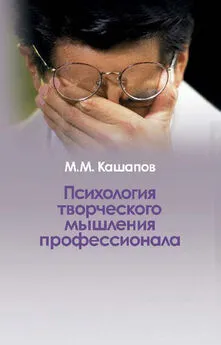Дайана Халперн - Психология критического мышления
- Название:Психология критического мышления
- Автор:
- Жанр:
- Издательство:Издательство Питер
- Год:2000
- Город:Санкт-Петербург
- ISBN:ISBN 5-314-00122-5
- Рейтинг:
- Избранное:Добавить в избранное
-
Отзывы:
-
Ваша оценка:
Дайана Халперн - Психология критического мышления краткое содержание
Эта книга написана в помощь тем, кто хочет научиться думать современно. Опираясь на новейшие достижения когнитивной психологии и свой уникальный педагогический опыт, Дайана Халперн разработала эффективную программу обучения навыкам «критического мышления». Данная книга может быть широко использована в преподавательской и методической работе, окажет неоценимую помощь в самообразовании, а кроме того, является своеобразным путеводителем по современной когнитивной психологии. Рекомендуется психологам, педагогам, философам, а также всем интересующимся когнитивной психологией, психологией творчества, теорией принятия решений.
Психология критического мышления - читать онлайн бесплатно полную версию (весь текст целиком)
Интервал:
Закладка:
Ruggiero V. R. (1995). Beyond feelings; A guide to critical thinking (4th ed.). Mountain View, CA: Mayfi-etd. Sadler, W. A., Jr., Whimbey, A. (November, 1985). A holistic approach to improving thinking skills. Phi Delta Kappan, 67, 199–202.
Sapir E. (1960). Culture, language and personality. Berkeley: University of California Press.
Schafly P. (1993, July 21). A mental health care nightmare. The Washington Times, (p. G4).
Schank R. C, Childers R. C. (1988). The creative attitude: Learning to ask and answer the right questions. New York: Macmillan.
Schauble L., Glaser R. (1990). Scientific thinking in children and adults, in D. Kuhn (Series Ed., Vol. Ed). Contributions to Human Development: Vol. 21. Developmental perspectives on teaching and learning thinking skills (pp. 9-27). New York: Basel, Karger.
Schick Т., Jr., Vaughn L. (1995). How to think about weird things. Mountain View, CA: Mayfield.
Schoenfeld A H. (1979). Can heuristics be taught? In J. Lochhead J. Clement (Eds.), Cognitive process instruction: Research on teaching skills. Philadelphia: Franklin Institute Press.
Schoenfeld A. H. (1985). Mathematical problem solving. New York: Academic Press.
Schoenfeld A. H., Herrmann D. J. (1982). Problem perception and knowledge structure in expert and novice mathematical problem solvers. Journal of Experimental Psychology: Learning, Memory, and Cognition, 5, 484–494.
Scholnick E. K., Friedman S. L. (1987). The planning construct in the psychological literature. In S. L. Friedman, E. K. Scholnick R. R. Cocking (Eds.), Blueprints for thinking: The role of planning in cognitive development (pp. 3-38). Cambridge. MA: Cambridge University Press.
ScrivenM. (1976). Reasoning. New York: McGraw-Hill.
Searleman A., Herrmann D. (1994). Memory from a broader perspective. New York: McGraw-Hill.
Sears A., Parsons J. (1991). Towards critical thinking as an ethic. Theory and Research in Social Education, 19(1), 45–68.
Seech Z. (1993). Open minds and everyday reasoning. Belmont, CA: Wadsworth.
Segal /. W., Chipman S. E, Glaser R. (Eds.). (1985). Thinking and learning skills: Vol. I. Relating instruction to research. Hillsdale, NJ: Lawrence Erlbaum Associates.
Seligman M. (1991). Learned optimism. New York: Knopf.
Shaklee H. (1987, November). Estimating cumulative risk: Flood and contraceptive failure. Paper presented at the Twenty-Eighth Annual Meeting of the Psychonomic Society, Seattle, WA.
Shanteau J., Grier M., Johnson /., Bemer E. (1991). Teaching decision-making skills to student nurses. In J. Baron R. V. Brown (Eds.), Teaching decision making to adolescents (pp. 185–206). Hills-dale, NJ: Lawrence Erlbaum Associates.
Shaver K. G. (1981). Principles of social psychology. Cambridge, MA: Winthrop.
Shaw G. A., de Mers S. T. (1986–1987). Relationships between imagery and creativity in high-IQ children. Imagination, Cognition Personality, 6(3), 247–262.
Shermer M. (1992). Anecdotes do not make a science: The skeptics reply. Skeptic, 1, 18–19.
Shubik M. (1971). The dollar auction game: A paradox in noncooperative behavior and escalation. Journal of Conflict Resolution, 15, 109–111.
Siegel E. (1991, May). Persuasion and decision-making. APS Observer, p. 8.
Simon H. A. (1977). The psychology of scientific problem solving. In H. A. Simon (Ed.), Models of discovery. Dordrecht, Netherlands: D. Reidel.
Simon H. A., Kaplan С A. (1989). In M. I. Posner (Ed.), Foundations of cognitive sciences (pp. 1 -47). Cambridge, MA: MIT Press.
Simonson /., Nowlis, S. M., Simonson, Y. (1993). The effect of irrelevant preference arguments on consumer choice. Journal of Consumer Psychology, 2, 287–306.
Singer В., Benassi V. A. (1981). Occult beliefs. American Scientist, 69, 49–55.
Sinnott J. D. (Ed.). (1989). Everyday problem solving: Theory and applications. New York: Praeger.
Skeptic. (1995). Race and IQ.3.
Slovic P. (1987). Perception of risk- Science, 236, 280–285.
Slovic P., Fischhoff, Lichtenstein S. (1986). In H. Arkes K. R. Hammond (Eds.), Judgment and decision making; An interdisciplinary reader. Cambridge, MA: Cambridge University Press.
Smedslund J. (1963). The concept of correlation in adults. Scandinavian Journal of Psychology, 44, 165–173.
Smith L. (1992, June 2). Rick's place revisited. The Los Angeles Times, p. Al.
Smith M. U. (1992). Expertise and the organization of knowledge: Unexpected differences among genetic counselors faculty, and students on problem categorization tasks. Journal of Research in Science Teaching, 29(2), 179–205.
Smith M. U. (1988). Successful and unsuccessful problem solving in classical genetic pedigrees. Journal of Research in Science Teaching. 25(6), 411–433.
Smith R. A. (1995). Challenging your perceptions: Thinking critically about psychology. Pacific Grove, CA: Brooks/Cole.
Smith S. M., Btankenship S. Я. (1991). Incubation and the persistence of fixation in problem solving. American journal of Psychology, 104(1), 61–87.
Snow R. E. (1986). Individual differences and the design of educational programs. American Psychologist ,41, 1029–1034.
Snydei M., Uranowitz S. W. (1978). Reconstructing the past: Some cognitive consequences of person perception. Journal of Personality and Social Psychology, 36,941–950.
Solorzano L. (1985, January 14). Think! Now schools are teaching how. U.S. News World Report.
Sorensen Т. С (1965). Kennedy. New York: Harper Row.
Sparke W, Taines В., Sidell S. (1975). Doublespeak: Language for sale. New York; Harper's College Press.
Spirer L., Spirer L. (1994). Data analysis for monitoring human rights. Annapolis Junction. MD: AAAS Distribution Center.
Stahl N. N., Stahl R. J. (1991). We can agree after all! Achieving consensus for a critical thinking component of a gifted program using the Delphi Technique. Roeper Review, 14(2), 79–88.
Stanovich К. E. (1992). How to think straight about psychology (3nd ed.). New York: HarperCollins.
Steen L. A. (1987). Mathematics education: A predictor of scientific competitiveness. Science, 237, 251–252.
Stein M. I. (1974). Stimulating creativity: Individual procedures (Vol. I). New York: Academic Press.
Stein M. I. (1975). Stimulating creativity: Group procedures (Vol. II). New York: Academic Press.
Sternberg R. J. (1977). Component processes in analogical reasoning. Psychological Review, 84, 353–373.
Sternberg R. J. (1981). Intelligence and nonentrench-ment. Journal of Educational Psychology, 73, 1-16.
Sternberg R. J. (1982). Who's intelligent? Psychology Today, 16,30–33,35-39.
Sternberg R. J. (1985). Instrumental and componential approaches to the nature and training of intelligence. In S. F. Chipman, J. W. Segal, R. Glaser (Eds.), Thinking and learning skills: Vol. 2. Research and open questions. Hillsdale, NJ: Lawrence Erlbaum Associates.
Sternberg R. J. (1986). Intelligence applied: Understanding and increasing your intellectual skills. New York: Harcourt Brace.
Sternberg R. J. (Ed.). (1988). The nature of creativity. New York: Cambridge University Press.
Sternberg R. J., Frensch P. A. (Eds.). (1991). Complex problem solving: Principles and mechanisms. Hills-dale, NJ: Lawrence Erlbaum Associates.
Sternberg R. J., Lubart T. (1995). Defying the crowd: Cultivating creativity in a culture of conformity. New York: The Free Press.
Sternberg R. J., Smith E. E. (1988). (Eds.). The psychology of human thought. New York: Cambridge University Press.
Sternberg R. /., Wagner R. K. (Eds.). (1986). Practical intelligence: Nature and origins of competence in the everyday world. New York: Cambridge University Press.
Sternberg R.J., WellE.M. (1980). An aptitude-strategy interaction in linear syllogistic reasoning. Journal of Educational Psychology, 72, 226–234.
Stewart J. K. (1985). From the director. National Institute of Justice: Research in brief. Washington, DC: U.S. Department of Justice.
Stroup D. J., Alien R. D. (Eds.). (1992). Critical thinking: A collection of readings. Dubuque, IA: Brown.
Summers G. J. (1968). New puzzles in logical deduction. New York: Dover.
Summers C. J. (1972). Test your logic: 50 puzzles in deductive reasoning. New York: Dover
Swartz R J., Parks S. (1994). Infusing the teaching of critical and creative thinking into elementary instruction. Pacific Grove, CA: Critical Thinking Press.
Taplin J. ?., Staudenmayer H. (1973). Interpretation of abstract conditional sentences in deductive reasoning. Journal of Verbal Learning and Verbal Behavior, 12,530–542.
Tardif T. Z., Sternberg R. J. (1988). What do we know about creativity? In R. J. Sternberg (Ed.), The nature of creativity: Contemporary psychological perspectives (pp 429–440). New York: Cambridge University Press.
TegerA. I. (1979). Too much invested to quit: The psychology of escalation of conflict. New York: Perga-mon.
Tetlock P. E. (1994). The psychology of futurology and the future of psychology. Psychological Science, 5, 1–4.
Thomas S. N. (1986). Practical reasoning in natural language (3rd ed.). Englewood Cliffs, NJ: Prentice-Hall.
Thouless R. H. (1932). Straight and crooked thinking. New York: Simon Schuster.
Thouless R. H. (1939). Tests of logical reasoning: How to think straight. New York: Simon Schuster.
Tinzman M., Jones B. F., Pierce /. (1992). Changing societal needs: Changing how we think about curriculum and instruction. In C. Collins and J. N. Mangeri (Eds.), Teaching thinking: An agenda for the 21st century (pp. 185–220). Hillsdale, NJ: Lawrence Erlbaum Associates.
Toulmin S., Rieke R., JanikA. (1979). An introduction to reasoning. New York Macmillan.
Tulving E. (1972): Episodic and semantic memory. In E. Tulving W. Donaldson (Eds.), Organization of memory. NY: Academic Press.
Tuma D. J., Reif F. (Eds.). (1980). Problem solving and education: Issues in teaching and research. Hills-dale, NJ: Lawrence Erlbaum Associates.
Turing A. (1950). Computing machinery and intelligence. Mind, 59, 433–460.
Tutu D. (1986). How to eat an elephant. In B. Lown E. Chazov (Eds.), Peace: A dream unfolding (p. 216). Ontario: Somerville House Books Ltd.
Tversky A. (1972). Elimination by aspects. A theory of choice. Psychological Review, 79, 281–299.
Tversky A., Kahneman D. (1971). Belief in the law of small numbers. Psychological Bulletin, 76, 104–110.
Tversky A., Kahneman D. (1974). Judgment under uncertainty: Heuristics and biases. Science, 185, 1124–1131.
TV linked to memory, radio to imagination. (1988, July 25). The Los Angeles Times, Part II, p. 3
Tversky A., Kahneman D. (1981). The framing of decisions and the psychology of choice. Science, 211, 453^58.
Читать дальшеИнтервал:
Закладка:



![Дэниел Левитин - Путеводитель по лжи [Критическое мышление в эпоху постправды]](/books/1101191/deniel-levitin-putevoditel-po-lzhi-kriticheskoe-my.webp)






